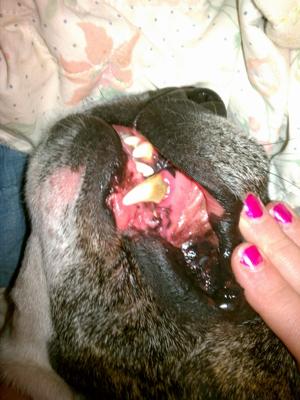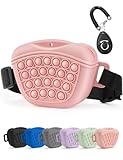10 Popular Dog Treats to Avoid and Healthy Alternatives to Keep Your Furry Friend Safe
If you’re a dog owner, you know that your furry friend loves treats! But what you may not know is that some dog treats can be harmful to your dog. Here are some dog treats to avoid:
– Rawhides
– Cooked bones
– Chocolate
– Coffee grounds
– Alcohol
– Grapes
– Raisins
– Cinnamon
– Garlic
– Onions
– Macadamia nuts
– Peanut butter
– Chicken jerky
– Salmon
– Sweet potato
– Beet pulp
– Corn syrup
– Sugar
– Salt
– MSG
– Propyl gallate
– Butylated hydroxyanisole
– BHA
– Ascorbic acid
– Vitamin E
– L-ascorbyl-2-polyphosphate
– Zinc sulfate
– Ferrous sulfate
– Manganese sulfate
– Niacin
–
Best 10 Dog Treats To Avoid
How to Choose the Right Dog Treat for Your Needs?

There are a few important things to consider when choosing a dog treat. First, you want to make sure the treat is digestible. If the treat is not digestible, then your dog will not get any nutritional value out of it. Second, you want to make sure the treat is safe for your dog. Some treats might contain ingredients that are harmful to your dog. Finally, you want to make sure the treat is tasty so your dog enjoys it.
3. Choose the right size
If you are buying a dog treat for a smaller dog, you should consider choosing a smaller sized treat. If you are buying a dog treat for a larger dog, you should consider choosing a larger sized treat. If you are buying a dog treat for a smaller dog, you should consider choosing a smaller sized treat.
4. Choose the right shape
If you are buying a dog treat for a smaller dog, you should consider choosing a smaller sized treat. If you are buying a dog treat for a larger dog, you should consider choosing a larger sized treat. If you are buying a dog treat for a smaller dog, you should consider choosing a smaller sized treat.
5. Choose the right ingredients
If you are buying a dog treat for a smaller dog, you should consider choosing a smaller sized treat. If you are buying a dog treat for a larger dog, you should consider choosing a larger sized treat. If you are buying a dog treat for a smaller dog, you should consider choosing a smaller sized treat.
## Conclusion
What Makes a Good Dog Treat?
Buying a good dog treat can be as important as buying good food. Selecting the right dog treats can be a challenge. You want a treat that is not only delicious but healthy. And I have one more criterion, the treats need to be made in the USA!
Related Post: Indulge Your Furry Friend with the Best All Natural Dog Treats: A Complete Guide to Healthy & Delicious RewardsThey should be made in the USA. The FDA has placed several foreign countries on a watch list because of issues with food contamination and ingredients. This has led to the recommendation of only buying treats that are produced in the USA, Canada, New Zealand, Australia, and Western Europe. I don’t want to give my dog anything that might make him sick or even kill him. I don’t want him to become one of the many dogs that have died from treats made poorly in China.
They need to be all-natural. The best dog treats are made from real foods, such as fruits, vegetables, and whole grains. In other words, treats made from real food that you could eat. Your dog’s treats should be healthy for him. I would never give my dog a diet that is not healthy, so I am not going to give him treats that are not healthy either.
They need to be easy to digest. Since one of the main functions of treats is to reward good behavior, they need to be easy to digest. If they are not, and your dog eats a lot of them, he can get stomach upset and diarrhea. If this happens, he might associate treats with the bad feeling and not want to get near them. It is better to find a treat that is easy to digest and that your dog likes than to give him something that he can’t digest.
They need to be healthy. The best dog treats are made from healthy ingredients. This includes meat, fruits, vegetables, and whole grains. It also means adding no artificial colors, flavors, or preservatives. If you are not able to see the ingredient list, then it is probably not a good treat for your dog.
They need to be palatable. Your dog needs to like his treats. If he doesn’t like them, then he will not be motivated to do the things that you ask of him. He will also not be willing to do the things that you want him to do.
Dog Treats That Should Be Avoided
Some treats for dogs have been associated with several health issues. If you want to know which treats are harmful to dogs, you’ve come to the right place. We’ll detail common dog treats that should be avoided, as well as homemade alternatives.
Homemade Dog Treats
1. Peanut Butter with Xylitol
Xylitol is an artificial sweetener that is often found in sugar-free gum, candy, and mints. It is also used as a food additive in certain products. Xylitol is highly toxic to dogs. It increases insulin release and can cause a significant decrease in blood sugar. This is known as hypoglycemia and can result in liver failure. Symptoms of xylitol poisoning include:
2. Garlic and Onions
Garlic and onions can cause digestive upset in dogs. It can also damage their red blood cells which can lead to weakness, jaundice, and anemia.
3. Grapes and Raisins
Grapes and raisins can cause sudden kidney failure in dogs. The exact reason why grapes and raisins are so toxic is currently unknown.
4. Macadamia Nuts and Walnuts
Macadamia nuts are another food that should be avoided. They can cause weakness, depression, vomiting, and tremors in dogs.
5. Yeast Dough
Yeast dough can rise deep in a dog’s stomach. When that happens, the dough can produce ethanol which can cause your dog to become drunk. The dough can also produce gas in the stomach which can cause bloating and/or discomfort.
How to Keep Your Dog From Eating Things They Shouldn’t?
Most young dogs will chew on different things as they’re exploring their environment. They’re also trying to figure out what their teeth feel like, so they may chew on some things even if they don’t taste or smell good. As your puppy grows up, they should outgrow the need to chew on everything they can get their paws on. But if that’s not the case, there are some things you can do to prevent your puppy from chewing on things they shouldn’t.
Create A Safe Place For Your Puppy
It’s important to create a safe space for your puppy. If they have a crate, they may feel more comfortable going there if they’re chewing on something they should not be. If they don’t have a crate, you can try creating one for them. You can also use their bed as their safe space. Make sure it’s in a place where your puppy won’t be able to get into trouble.
Give your puppy some items they can chew on
If your puppy chews on something and you can’t immediately take it away from them, offer them a chew toy in exchange for the item they were chewing on. If they accept the chew toy, praise them and give them a treat. Continue to offer them a chew toy whenever they’re chewing on something they shouldn’t be. Eventually, they may start looking for the chew toy instead of the undesirable object.
Make your puppy feel comfortable and safe
If your puppy is scared, they may chew on things to help calm themselves. Try to create a safe and comfortable environment for your puppy. If they’re not feeling well, take them to the vet to make sure there isn’t anything wrong.
Recommended Article: Train Me Dog Treats
How to Train Your Dog to Avoid Eating Inappropriate Items?
1. Take Away Their Favorite Chew Items
If you give your dog a new toy that they aren’t allowed to play with it will only make them want it more. If you aren’t going to let them chew on certain items, then don’t give them new items that are off limits.
2. Get Your Dog a New Chew Toy
If your dog is chewing on something they shouldn’t be chewing on, you can take the item away from them. Immediately replace the item with a new chew toy that is appropriate to chew. This will counteract their instinct to chew in that location.
3. Exercise
If your dog has pent-up energy, they will want to chew on things. Make sure your dog is getting enough exercise and is getting enough attention. A tired dog will be less likely to chew on inappropriate items.
4. Observe Control Over Your Dog’s Food
Dogs that have access to food all the time will be more likely to eat inappropriate items. Make sure you only put the correct amount of food in their food bowl. If they finish it all, wait until the next feeding time to put more food down. This will make them less likely to eat inappropriate items.
5. Exercise Control Over Your Dog’s Toys
If your dog has access to all of their toys when you’re gone, they will be more likely to chew on inappropriate items. Try to put away toys that you don’t want them to chew on and only leave out toys that are safe for them to chew on.









